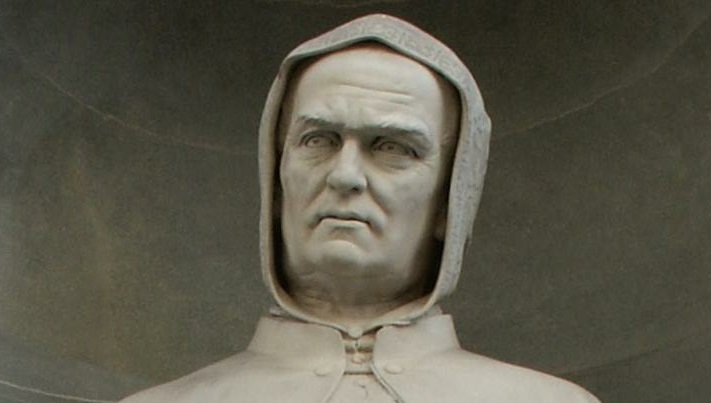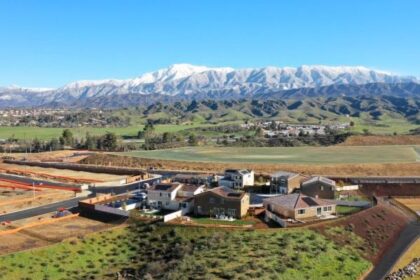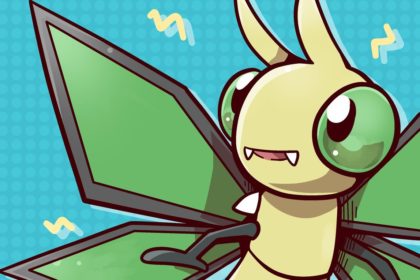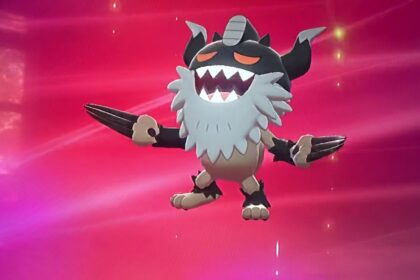Giotto di Bondone was an Italian painter and architect from Florence during the Late Middle Ages. He worked during the Gothic and Proto-Renaissance period. Take a look below for 30 more strange and interesting facts about Giotto di Bondone.
1. Giotto’s contemporary, the banker and chronicler Giovanni Villani, wrote that Giotto was, “the most sovereign master of painting in his time, who drew all his figures and their postures according to nature” and of his publicly recognized “talent and excellence.”
2. In his “Lives of the Most Excellent Painters, Sculptors, and Architects,” Giorgio Vasari described Giotto as making a decisive break with the prevalent Byzantine style and as initiating, “the great art of painting as we know it today, introducing the technique of drawing accurately from life, which had been neglected for more than two hundred years.”
3. Giotto’s masterwork is the decoration of the Scrovegni Chapel, in Padua, also known as the Arena Chapel, which was completed around 1305.
4. He was born in a farmhouse, perhaps at Colle di Romagnano or Romignano.
5. Since 1850, a tower house in nearby Colle Vespignano has borne a plaque claiming the honor of his birthplace, an assertion that is commercially publicized.
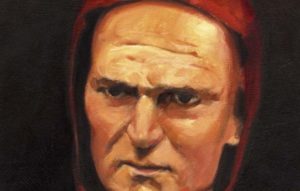
6. His father’s name was Bondone.
7. The year of his birth is calculated from the fact that Antonio Pucci, the town crier of Florence, wrote a poem in Giotto’s honor in which it’s stated that he was 70 at the time of his death.
8. Vasari states that Giotto was a shepherd boy, a marry and intelligent child who was loved by all who knew him.
9. The great Florentine painter, Cimabue, discovered Giotto drawing pictures of his sheep on a rock.
10. Giotto’s drawings were so lifelike that Cimabue approached Giotto and asked if he could take him on as an apprentice.
11. Vasari tells of one occasion when Cimabue was absent from the workshop, and Giotto painted a remarkably lifelike fly on a face in a painting of Cimabue. When Cimabue returned, he tried several times to brush the fly off.
12. Vasari related that when the Pope sent a messenger to Giotto, asking him to send a drawing to demonstrate his skill, Giotto drew a red circle so perfect that it seemed as though it was drawn using a pair of compasses and instructed the messenger to send it to the Pope.
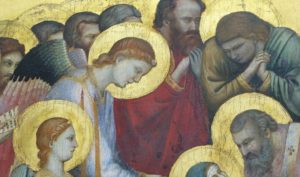
13. Many scholars today are uncertain about Giotto’s training and consider Vasari’s account that he was Cimabue’s pupil as legend.
14. In about 1290, Giotto married Ciuta, the daughter of Lapo del Pela of Florence.
15. His married to Ciuta produced four daughters and four sons, one of whom became a painter.
16. By 1301, Giotto owned a house in Florence, and when he was not traveling, he would return there and live in comfort with his family.
17. According to Vasari, Giotto’s earliest works were for the Dominicans at Santa Maria Novella. They include a fresco of “The Annunciation” and the enormous suspended Crucifix, which is about 5 meters high.
18. Earlier works attributed to Giotto are the “San Giorgio alla Costa Madonna and Child”, now in the Diocesan Museum of Santo Stefan al Ponte, Florence, and the signed panel of the “Stigmata of St. Francis” housed in the Louvre.
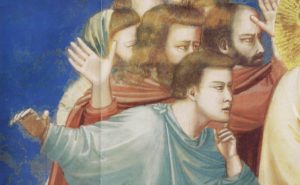
19. He was called to work in Padua and also in Rimini, where there remains only a Crucifix painted before 1309 and conserved in the Church of St. Francis.
20. According to documents of 1301 and 1304, Giotto by this time possessed large estates in Florence, and it’s probable that he was already leading a large workshop and receiving commissions from throughout Italy.
21. Many painters from northern Italy were influenced by Giotto’s work in Padua, including Guariento, Giusto de’Menabuoi, Jacopo Avanzi and Altichiero.
22. From 1306 to 1311, Giotto was in Assisi, where he painted the frescoes in the transept area of the Lower Church of the Basilica of St. Francis, including “The Life of Christ,” “Franciscan Allegories” and the “Maddalena Chapel.”
23. A document from 1313 about his furniture shows that he had spent a period in Rome some time before returning to Florence.
24. In 1334, Giotto was appointed chief architect to Florence Cathedral.
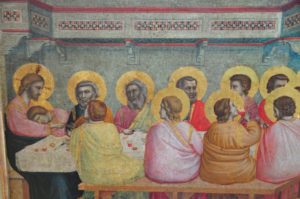
25. He designed the bell tower, known as Giotto’s Campanile, begun on July 18, 1334. It was not completed entirely to his design.
26. Before 1337, he was in Milan with Azzone Visconti, but no trace of works by him remain in the city.
27. His last known work was with his assistants’ help: the decoration of Podesta Chapel in Bargello, Florence.
28. In his final years, Giotto had become friends with Giovanni Boccaccio and Sacchetti, who featured him in their stories.
29. According to Vasari, Giotto was buried in the Cathedral of Florence, on the left of the entrance and with the spot marked by a white marble plaque.
30. According to other sources, he was buried in the Church of Santa Reparata.

